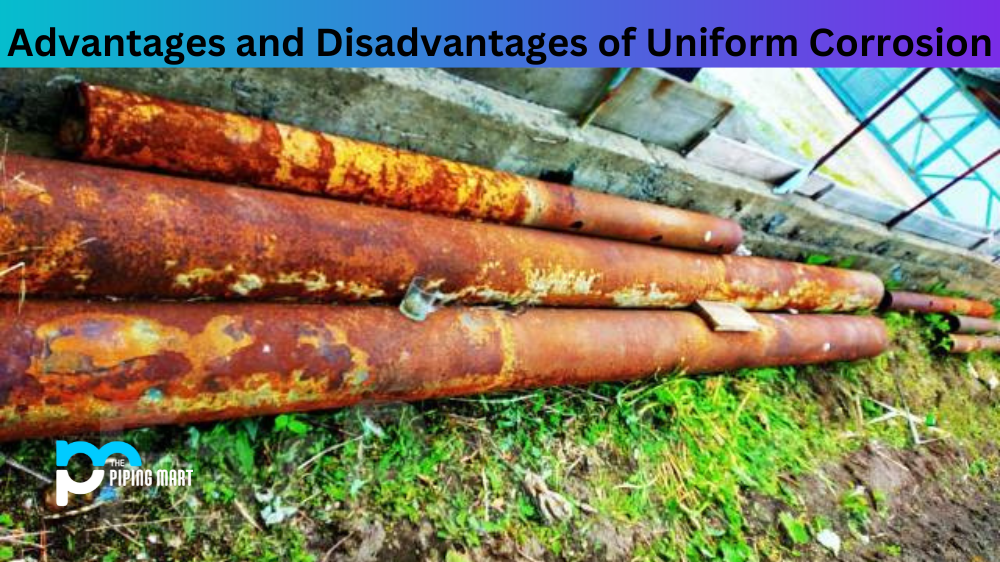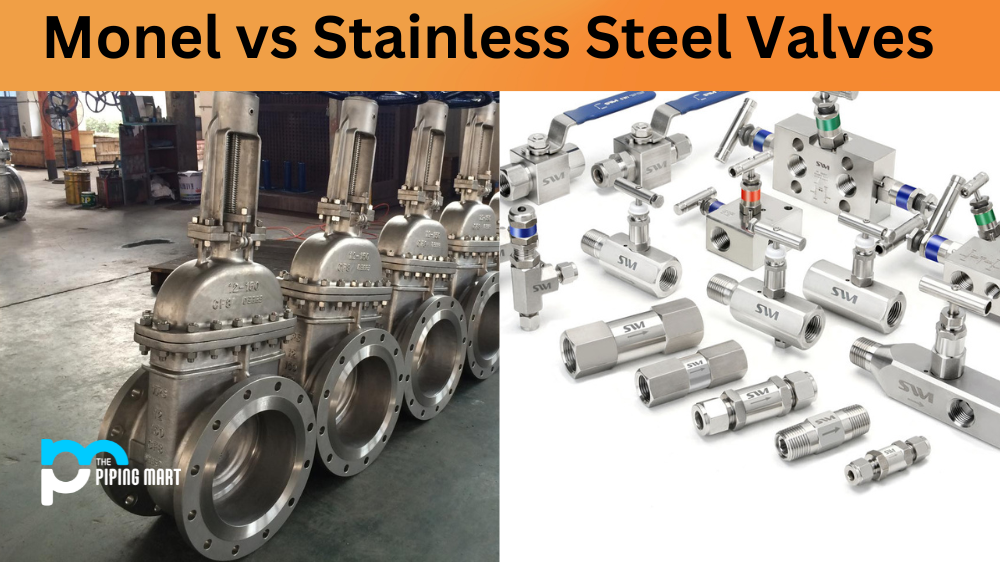Corrosion is an inevitable process that affects metals and other materials. Uniform corrosion, also known as general corrosion, is a type of corrosion that evenly attacks the entire surface of a metal. While it is considered less destructive than localized corrosion, which can cause pitting and cracking, uniform corrosion has advantages and disadvantages. In this blog post, we will discuss the benefits and drawbacks of uniform corrosion to help you better understand its impact on metals and other materials.
Advantages of Uniform Corrosion
One of the advantages of uniform corrosion is that it is relatively predictable, making it easier for engineers to design materials that can withstand its effects. This type of corrosion is also visually apparent, making it easier to detect and monitor. Additionally, uniform corrosion leads to an even loss of material, which can help maintain the structural integrity of metals over time. For instance, uniform corrosion can help reduce stress concentrations on metal surfaces, extending their operational lifespan.
More predictable
Uniform corrosion is more predictable than localized corrosion, affecting the entire metal surface. This makes predicting how long a metal will last in a given environment and planning repairs or replacement easier.
Less severe
Uniform corrosion is less severe than localized corrosion, as it does not quickly eat away at the metal. This means metals affected by uniform corrosion typically last longer than those affected by localized corrosion.
Easier to detect
Uniform corrosion is easier to detect than localized corrosion, as it is visible on the entire metal surface. This makes it easier to catch early and to prevent further damage.
Easier to prevent
Uniform corrosion is also easier to prevent than localized corrosion, as many methods are available for protecting metals from uniform attack. These methods include coating the metal with a protective layer, using inhibitors, and controlling the environment around the metal.
Less expensive to repair
Finally, uniform corrosion is less expensive than localized corrosion, as it does not require special techniques or materials. This means that the cost of repairing uniform corrosion damage is typically lower than that of repairing localized corrosion damage.
Disadvantages of Uniform Corrosion
Despite the benefits mentioned above, uniform corrosion also has its drawbacks. One of the main disadvantages is that it can lead to significant material loss over time if uncontrolled. This can be especially problematic for structures with heavy loads, such as bridges and buildings. In addition, uniform corrosion can degrade the aesthetic appeal of materials, which can be a crucial factor for industries such as architecture and interior design. Finally, uniform corrosion can also compromise the protective coatings that are applied to metals, which can end up accelerating further corrosion.
Unpredictable
One of the most significant disadvantages of uniform corrosion is its unpredictability. This type of corrosion can occur anywhere on a metal surface, and it is often difficult to predict when or where it will occur. This can make it difficult to prevent, as there is no way to know when or where to apply a protective coating.
Can Be Difficult to Detect
Another disadvantage of uniform corrosion is that it can be difficult to detect. This corrosion often occurs slowly and evenly over a large area, making it hard to spot with the naked eye. This can lead to serious problems, as the metal may be significantly weakened before the corrosion is detected.
Accelerated by Environmental Conditions
Environmental conditions such as humidity and temperature can also accelerate uniform corrosion. This means that metals in certain environments are more likely to experience this type of corrosion than others.
It Can be Not Easy to Treat
Once uniform corrosion has occurred, it cannot be easy to treat. This type of corrosion often affects a large area, making it hard to apply a protective coating evenly. Additionally, the metal may need to be repaired or replaced if the damage is severe enough.
Prevention Is Difficult
Preventing uniform corrosion can be difficult, as there is no way to predict when or where it will occur. This means that metal surfaces must be regularly inspected for signs of corrosion, and any areas that show signs of corrosion must be immediately treated.
Preventing and Managing Uniform Corrosion
Preventing and managing uniform corrosion involves design, maintenance, and monitoring. For instance, engineers can use materials more resistant to corrosion or apply protective coatings to help minimize its effects. Regular inspection and monitoring can also help detect any signs of corrosion before they become critical. In addition, proper maintenance practices such as cleaning, painting, and lubrication can help reduce the likelihood of uniform corrosion.
Conclusion:
Uniform corrosion is a common form affecting metals and other materials. While it can be advantageous and disadvantageous depending on the situation, it is critical to understand its impact and how to prevent and manage it. Applying proper corrosion management practices can extend the operational lifespan of metals and other materials, minimize maintenance costs, and avoid catastrophic failures. Stay vigilant, stay proactive, and stay ahead of uniform corrosion.

Abhishek is a seasoned blogger and industry expert, sharing his insights and knowledge on various topics. With his research, Abhishek offers valuable insights and tips for professionals and enthusiasts. Follow him for expert advice on the latest trends and developments in the metal industry.




